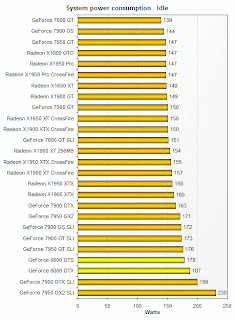 ASUS takes a break from its barrage of Intel P965 motherboard SKUs over the past few months to focus on AMD's new chipset, but unlike Sapphire, ASUS does what they do best, and that's to specialize. Instead of one board to fit every usage model, ASUS has two variants of the AMD 690G: The no-frills M2A-VM for the more business minded and the entertainment focused M2A-VM HDMI. Both boards are essentially designed on the same PCB; the only difference being that the latter features additional FireWire support as well as being bundled with additional audio and video connectors. In this review, we take a look at what the M2A-VM HDMI has to offer.
ASUS takes a break from its barrage of Intel P965 motherboard SKUs over the past few months to focus on AMD's new chipset, but unlike Sapphire, ASUS does what they do best, and that's to specialize. Instead of one board to fit every usage model, ASUS has two variants of the AMD 690G: The no-frills M2A-VM for the more business minded and the entertainment focused M2A-VM HDMI. Both boards are essentially designed on the same PCB; the only difference being that the latter features additional FireWire support as well as being bundled with additional audio and video connectors. In this review, we take a look at what the M2A-VM HDMI has to offer.PCMark05's results on the other hand, were more favorable to the ASUS M2A-VM HDMI than SYSmark was. The board tied with the Sapphire board in the CPU subsystem performance scores, and while its memory performance fell below the Sapphire Pure Innovation HDMI, the ASUS still managed to outdo the ECS. Lastly, we see that all three boards share similar HDD performance numbers.
In our Sapphire Pure Innovation HDMI review, we mentioned about the versatility of the AMD 690G chipset, on how its features can be configured for the home theater generation or purely for business. ASUS is one of the manufacturers we know that would make use of this and develop specific products to cater to the different sectors. However, is it worth the trouble of pushing out two product lines for a mainstream chipset such as the AMD 690G? The M2A-VM HDMI is definitely the more interesting of the two, but its single defining feature is an add-on module that would probably work on either board. Together, the connection options on the ASUS M2A-VM HDMI are able to match the Sapphire boar
 d, but connectivity comes at a premium. The regular M2A-VM retails for around US$70 today, while the M2A-VM HDMI averages about US$20 more - just for the extra HDMI module and added FireWire connectivity.
d, but connectivity comes at a premium. The regular M2A-VM retails for around US$70 today, while the M2A-VM HDMI averages about US$20 more - just for the extra HDMI module and added FireWire connectivity.The motherboard itself is a very well packaged product, and we've come to expect no less from ASUS. They've done a great job with its design and layout, avoiding potential cable, expansion and heat problems that might arise in the smaller micro ATX form factor. The Northbridge does tend to get very warm under load however, but the board seems to take things in stride. We did not encounter any compatibility or stability issues with the M2A-VM HDMI, even under heavy benchmarking loops. While the high-end motherboard market has been evangelizing the use of newer materials such as solid capacitors and digital PWM circuitry, the M2A-VM HDMI does it the old school way, and we're quite happy that it works just as well. The only gripe we have against the M2A-VM HDMI is the lack of proper 8-channel analog audio jacks, which puts the regular PC users at a disadvantage.
We were a little disappointed at first that ASUS did not include any memory tweaking options for the board, but since performance and overclocking isn't its main attraction, we let the matter slide. At the very least, ASUS does allow some rudimentary voltage and overclocking to take place. Performance-wise, the M2A-VM HDMI managed to be consistent across our benchmarks, though the Sapphire Pure Innovation HDMI takes the top spot in every test. Of course, when you benchmark a board that is designed to run at stock configurations (ASUS M2A-VM HDMI) with one that has a comprehensive tweaking BIOS (Sapphire Pure Innovation HDMI), there will be an expected gap between the two.
Comparisons with the Sapphire Pure Innovation HDMI will likely the be topic of the day when it comes to AMD 690G motherboards and while Sapphire may have stolen the thunder from larger motherboard manufacturers, the ASUS M2A-VM HDMI is still a very well designed and well implemented motherboard for its target market as an OEM or home entertainment platform.






























